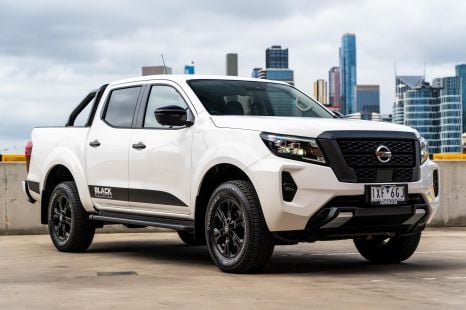

Josh Nevett
7.3
3 Days Ago
The Musso blends refined engine performance with capable foundations, though it's lacking in ground clearance and aftermarket mods.
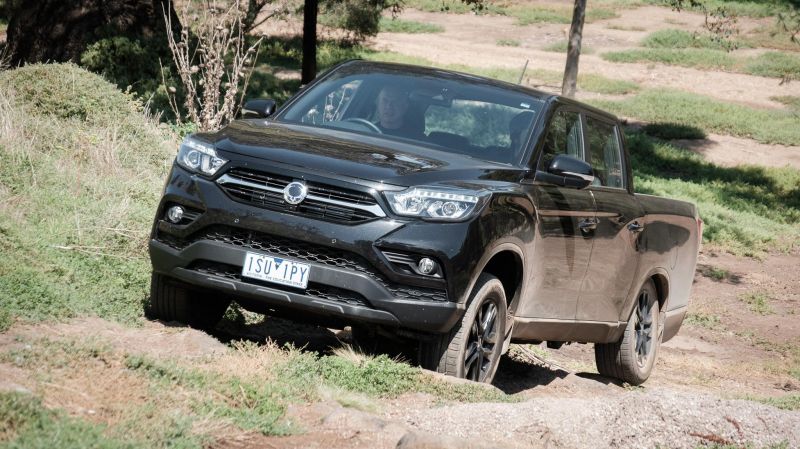
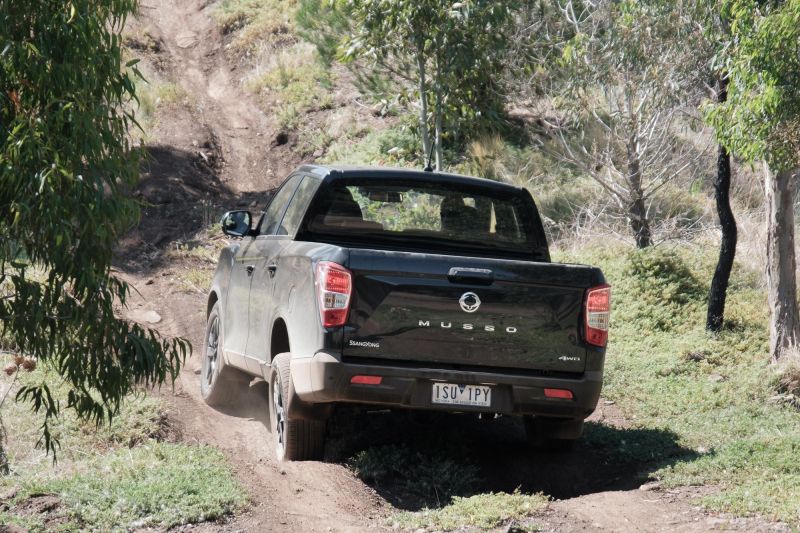

Contributor

Contributor


Contributor

Contributor
Take advantage of Australia's BIGGEST new car website to find a great deal on a Ssangyong Musso XLV.
Whilst you may not have heard of SsangYong, the Korean brand has been available in Australia since the 1990s and has a long history of manufacturing 4×4 vehicles stretching back to 1954.
As Korea’s top producer of SUVs, SsangYong was responsible for some surprisingly cool-looking and frighteningly similar copies of early Jeeps with their Shinjin Jeep model back in 1974. Sadly, today we are not off-road testing one of those – but we are taking a look at the latest version of the SsangYong Musso, a dual-cab utility with prices ranging from around $32,000 to $42,000.
The company has an interesting lineage with links to SAIC (makers of the LDV T60), Daewoo, Daimler Benz and Mahindra. That withstanding, early Musso models were, putting it bluntly, a touch ugly and not very well-received by the Australian market.
That said, the 2021 SsangYong Musso sits proudly with a tough new look based around more subtle styling and a beefier more balanced design. Interestingly enough, the Musso comes in standard form with a multi-link coil suspension set up in the rear and the version we have today, which is the XLV long-wheelbase workhorse, is set up with leaf springs and a 3500kg towing capacity.
It’s a long vehicle with an extra 300mm over the standard coil-sprung version, taken up between the rear seat and the tub, which means more space for taller passengers in the rear and more room for longer loads out the back.
We’ll be putting it through the standard tracks and obstacles to get a better idea of howwell it behaves off-road, how capable it is and what it brings to the 4×4 performance table.

Starting at the bottom (literally), one thing I did absolutely love were the air-conditioned front seats which worked surprisingly well and will be warmly welcomed (excuse the pun) on long, hot outback hauls where things can definitely get a little hot and steamy down below. They made a refreshing difference to comfort levels on a hot summer’s day.
Rubber-wise the Musso comes, like many vehicles do, with road-going or highway tyres that provide poor grip off-road. It’s another trade-off from manufacturers and can be easily rectified with the purchase of more suitable tyres based around your individual needs. Something as simple as a Cooper or Mickey Thompson ‘all terrain’ tyre would be a vast improvement in not only traction but also strength and durability in off -road conditions.
In the pursuit of better fuel economy, comfort and more car-like handling, dual-cab utes continue to get lower and lower. Whilst even the current Toyota HiLux now has under 250mm of clearance, the Musso is quite a bit lower at 215mm, leaving it as one of the worst in its class.
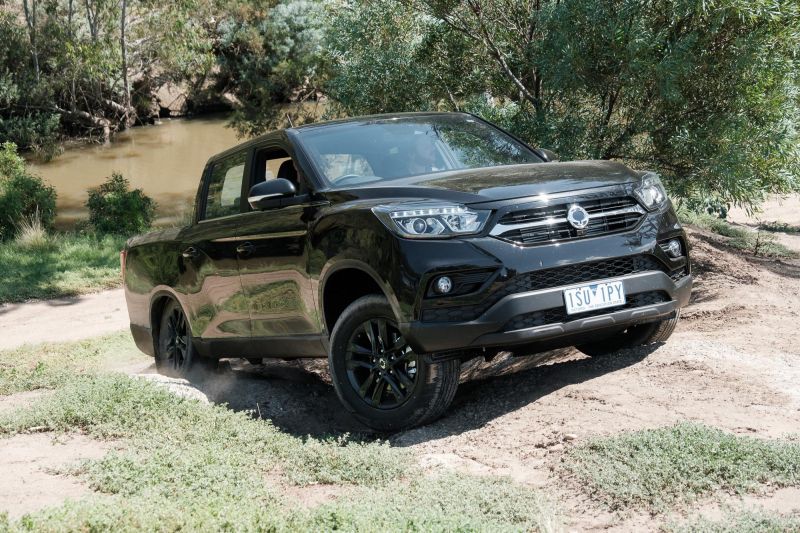
With traction being such an important part of 4×4-ing, it is of little consequence if you don’t have the clearance to match it, and it’s no surprise the Musso banged and clanged repeatedly as we dragged it over obstacles, plus the lack of clearance would have considerably contributed to it’s failure during our number plate water test – more on that in a bit.
Selecting 4×4 is easy with the standard 2H, 4H and 4L located on a knurled dial alongside the transmission selector. Ratio engagement is also quite quick with no major delays or difficulties. The 4×4 system is typical and run-of-the-mill which is a sign that it will do what is expected and be easy to operate.
Normally, a rear diff lock inclusion is a huge thumbs up from me, with the flick of a switch providing full drive to both rear wheels. But that by definition is a ‘switchable’ or ‘manual’ lock.
The Musso on the other hand is armed with Eaton’s Mlocker – an auto lock –which from my experience is not as good as a manual one. Switchable lockers can be engaged at any time when the driver feels they are required, and provide 100 per cent locked differential action for maximum traction.
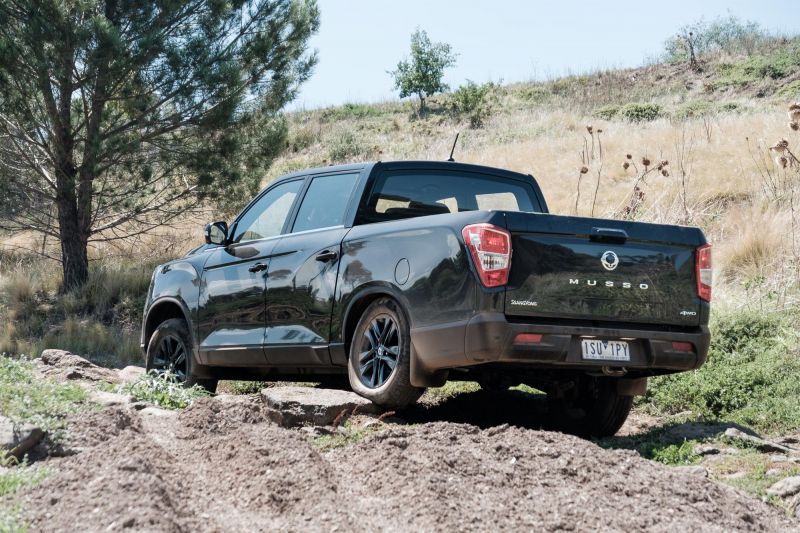
An auto locker reacts to a torque or RPM difference and engages temporarily. So it is switching in and out frequently when you are driving and often doesn’t really provide fully-locked differential drive at the exact times you want it to.
Similar to most modern electronic safety systems, it is reactive, not preventative and by the time it engages, you have already lost traction. It is there though, and it does still offer improved traction. Whilst it is not as good as a manual locker (in my mind), it gets the job done without the need for any action or experience from the driver.
With that said, during the hill climb the locker was required and we did make it to the top with out too much fuss. If anything, it was the tyres letting the team down and as mentioned, they can easily be replaced.
Across uneven terrain the Musso’s suspension does seem to lack travel and is prone to lifting a wheel. The rear diff lock goes some way to solve the problem but a better aftermarket suspension system, along with more aggressive tyres would be a huge benefit in improving the vehicle’s off-road ability.
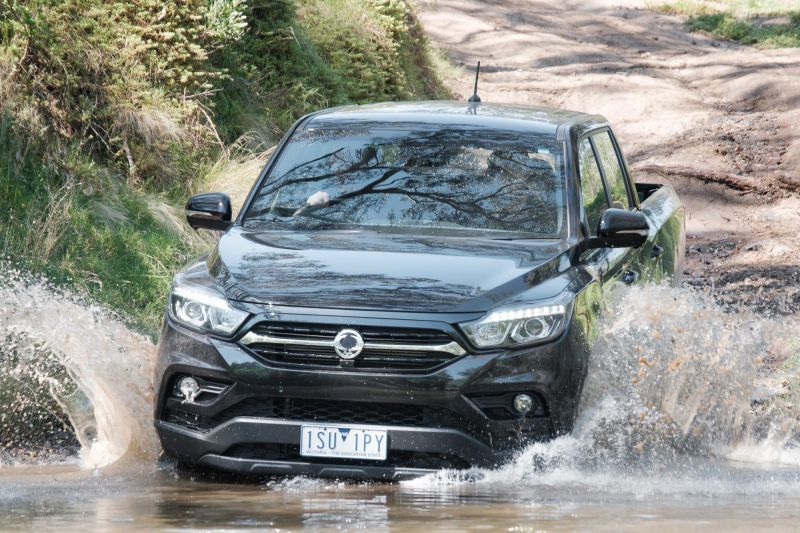
Whilst our water crossing test is quite basic, the Musso did fail our ‘inside joke’ water test with the front number plate coming off.
Simply held to the plastic bumper with two short self-tapping screws, the set up just isn’t sufficient for even a basic water crossing. It’s no big deal and certainly no game changer, but it’s worth noting if you plan to hit a little water, you will need to beef up the front number plate retainers first.
One last point to note for off-road capability is the inclusion of a 12V power socket inside the ample tub area – huge is more appropriate and it is arguably the biggest tub on the market based on length, width and depth.
It’s a simple addition yet one that goes a long way in providing a useful space for those who want to run a fridge or spotlight, or for that matter, power any 12V accessory from the rear of the vehicle when out on adventures or working.
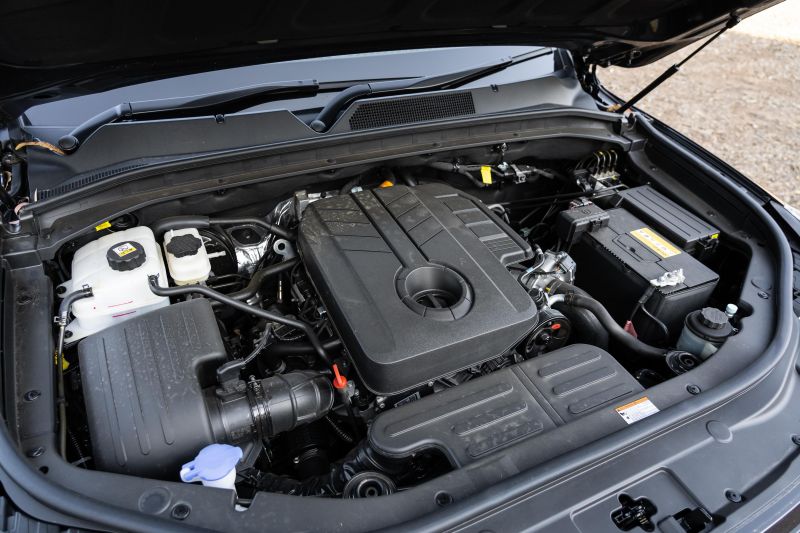
This latest-generation Musso is powered by a nicely balanced 2.2-litre four-cylinder turbo-diesel mated to a six-speed automatic transmission. On paper it’s not going to attract any attention, but on- and off-road it is responsive, efficient and nicely refined.
We are starting to feel like some manufacturers are deliberately reducing sound deadening or are leaving their engines noisier to give a rugged truck-like feel in terms of the sound, but conversely whilst many other dual-cabs provide an unwanted ‘truck like’ in-cab experience, the Musso is pleasantly quiet, smooth and comfortable. It’s a welcome point of difference.
Like many vehicles we test, it’s no race car but the engine, rev range, power and torque delivery, gearbox ratios and gear changes do feel deliberately set to get the task done effectively and efficiently.
The Musso is a pleasure to drive and it’s so smooth you don’t notice a lack of power or performance. You don’t worry about it responding slowly or lacking power, it simply just does what’s required in an effortless manner, leaving the driver to focus on other things.
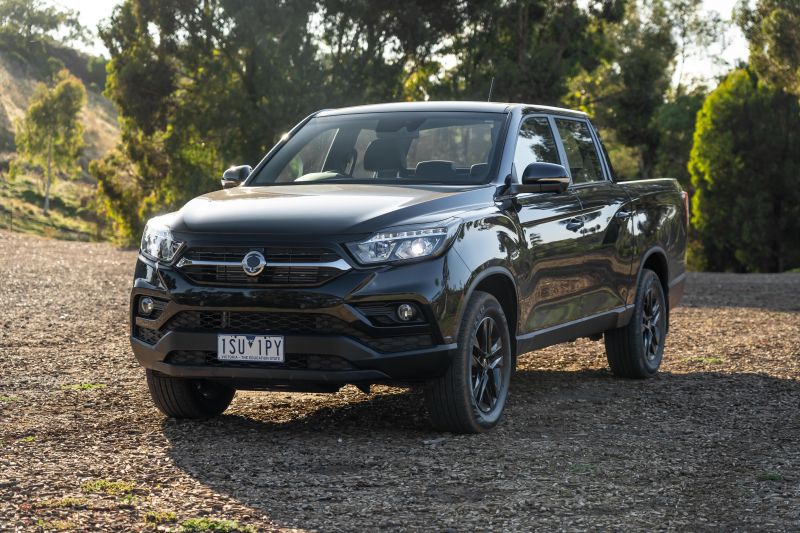
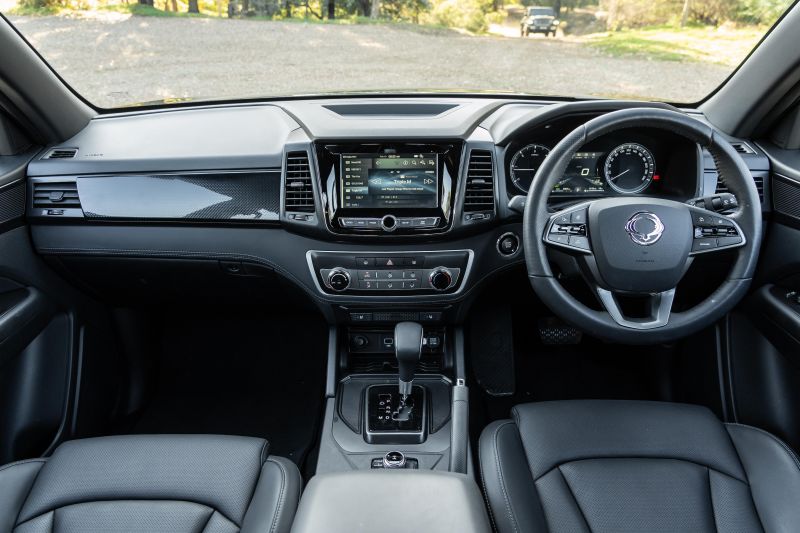
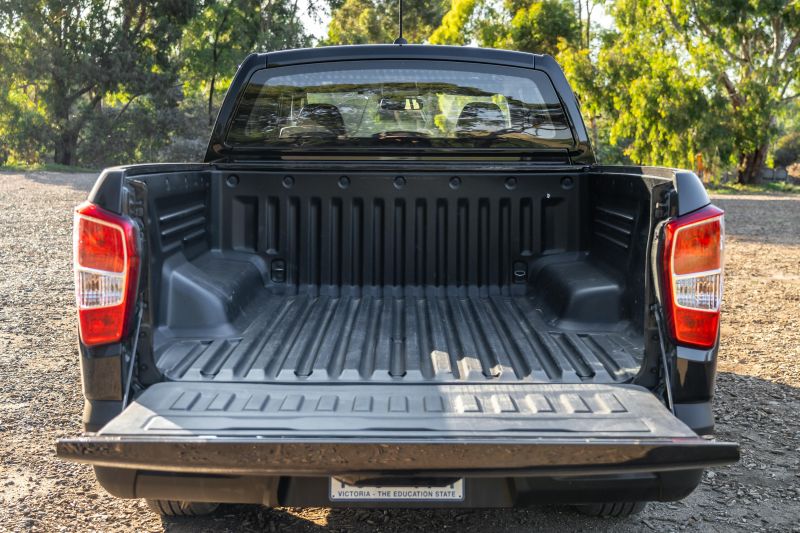
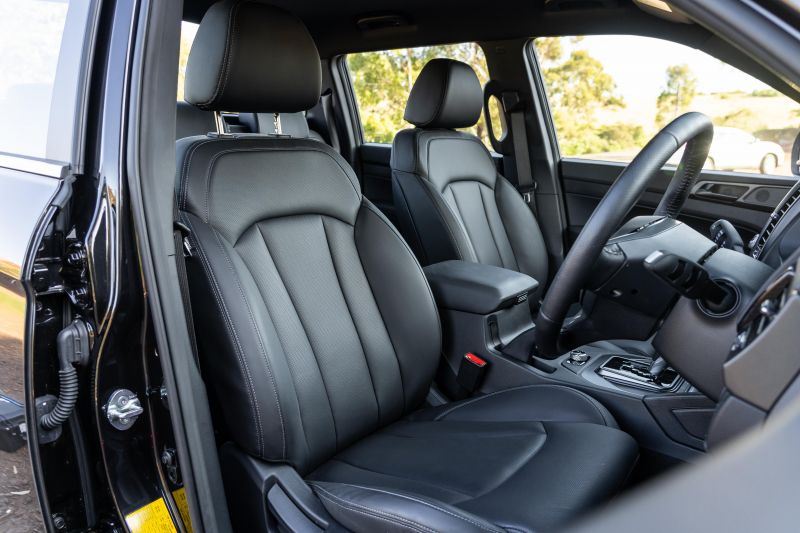
There really isn’t a lot available for the likes of the Musso when it comes to accessories. And, the disappointing thing is good reliable vehicles like this will be somewhat shunned or limited in popularity due to the lack of aftermarket hop-ups.
We get the business side of it, why would companies like ARB invest heavily in the R&D, the engineering, the tooling and the testing, which can amount to considerable cost if it’s a risky investment with only limited sales potential.
The trick would be for SsangYong to follow the likes of Ateco (distributor for a number of off-road vehicles from Ram and LDV) who have invested in their own lines of accessories in an effort to give their vehicles that little bit extra appeal and cut-through when it comes to accessorising.
With that said, there is the common run of aftermarket gear which includes things like floor mats, canopies, tow bars, tub lids and dressed-up side steps. There are some suspension kits around but what is really needed to help get these vehicles into the outback with confidence are things like bull bars, roof racks and a diversity of quality suspension options.
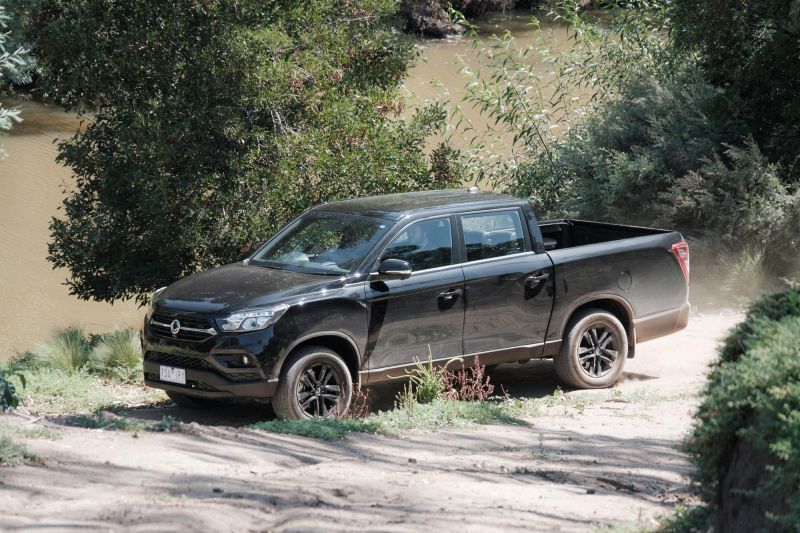
As Australia’s only dual-cab utility with a seven-year, unlimited-kilometre warranty, the SsangYong Musso makes quite a statement and far from its, well… ugly ancestors. It’s not a bad-looking vehicle and delivers a relatively good driving experience.
It’s time the dual cab market got a shake-up and with the failure of the Mercedes-Benz X-Class at the other end of the price scale, vehicles like the GWM Ute and SsangYong Musso offer a lot of vehicle, a quality experience and reasonable performance, all at a refreshingly affordable price point.
If accessories start to become available for the Musso, like decent bull bars and suspension, it is going to be a serious contender for dual-cab consumers wanting a comfortable, reliable and well-appointed workhorse, weekender toy and family tourer.
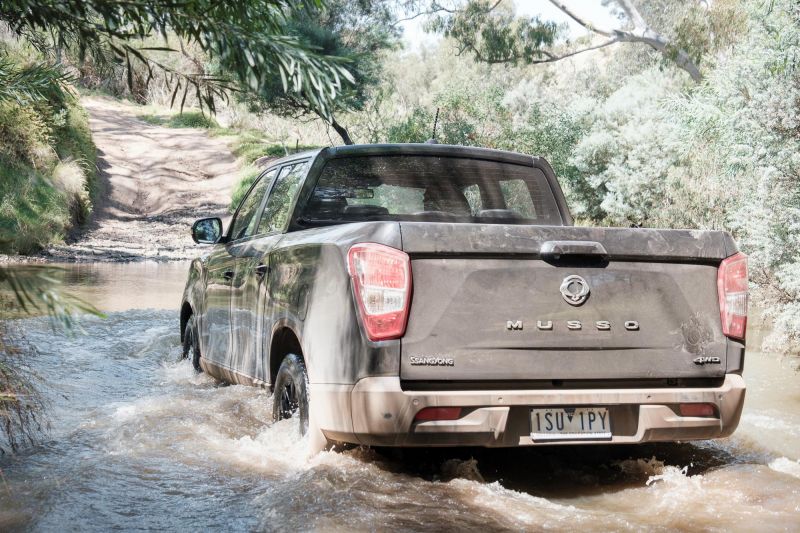
But, there are considerations with the lack of clearance being a big one for true off-road ability.
It is though, a step in the right direction and I encourage SsangYong to take the lead and back the vehicle up with functional accessories that will foster consumer confidence and give enthusiasts the ability to take the Musso further.
The vehicle may not have that ‘wow’ factor but it does, in most situations, perform effectively and efficiently in an underlying way that leaves the driver with no concern, worry or stress about it’s performance or reliability.
Click the images for the full gallery
Take advantage of Australia's BIGGEST new car website to find a great deal on a Ssangyong Musso XLV.


Josh Nevett
7.3
3 Days Ago


James Wong
2 Days Ago
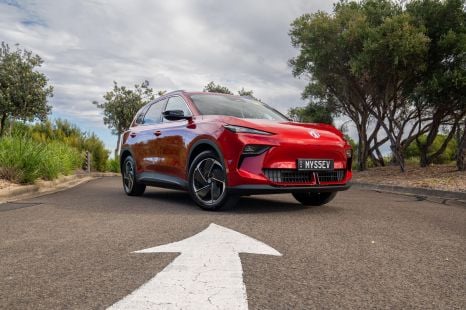

Andrew Maclean
2 Days Ago
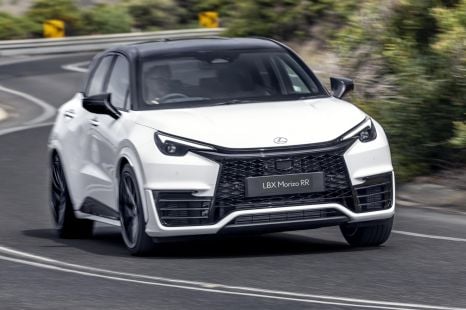

Josh Nevett
8
2 Days Ago
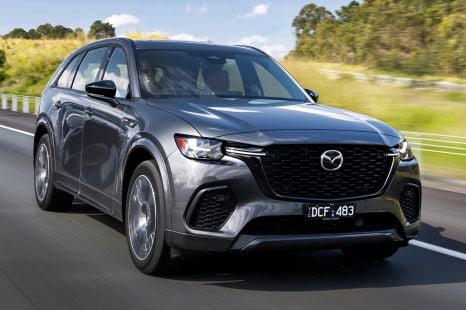

Jack Quick
7.9
1 Day Ago


Damion Smy
12 Hours Ago